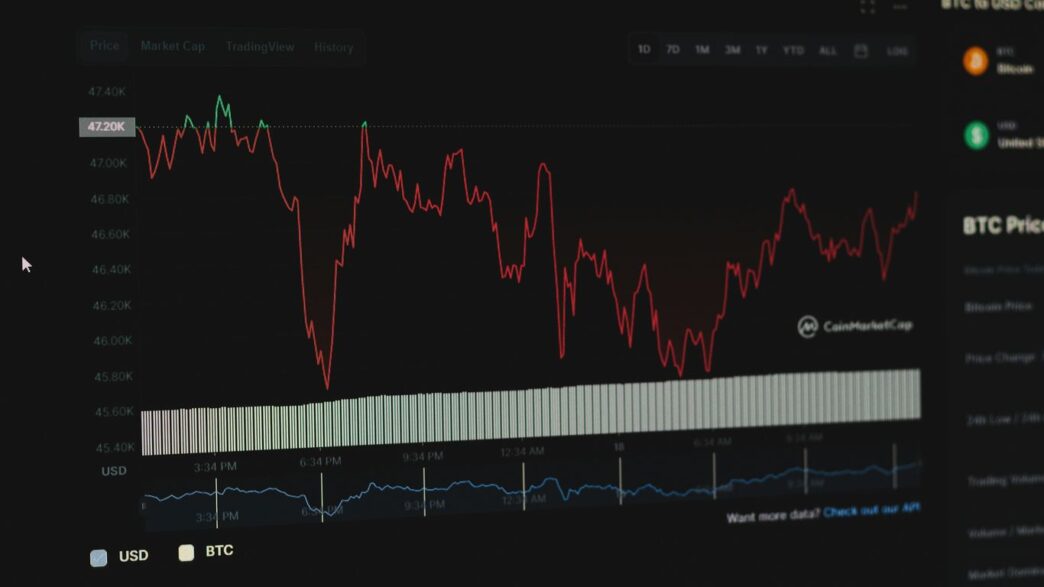Alright, so the world of medical technology, or medtech as we call it, is getting ready for a pretty big year in 2025. It feels like things are picking up steam, especially when it comes to companies going public, which is what we call an IPO. We’re seeing a lot of talk about new tech, how money is flowing, and what the rules might be. It’s a lot to keep track of, but it means there could be some cool new gadgets and treatments coming our way. Let’s break down what’s happening with medtech IPOs.
Key Takeaways
- Investor interest in medtech IPOs is getting stronger, even though it’s not quite at the peak levels seen a few years ago. It looks like companies with solid products and clear plans are the ones catching investors’ eyes.
- Expect more focus on companies that can prove they have a real market for their products and strong financial backing. The days of sky-high valuations without much to show for it seem to be fading.
- Money is starting to flow back into medtech companies, both from venture capitalists and through big funding rounds. This is good news for innovation and could lead to more companies getting the cash they need to grow.
- New technologies like AI and digital health tools are really driving a lot of the excitement. Companies using these advanced methods to improve patient care and diagnostics are likely to be front and center.
- Big medtech companies are making smart moves, buying up smaller ones and selling off parts of their business that aren’t performing as well. This means they’re getting ready to invest in areas that show the most promise for the future.
Resurgence of Medtech IPO Activity
It feels like the brakes have been pumped on new companies going public for a while, right? Well, things are starting to shift. We’re seeing more medtech companies testing the waters with IPOs, and frankly, it’s a good sign. While it’s not quite the frenzy of a few years back, the activity is picking up, and investors seem more willing to put their money into public medtech ventures.
Investor Optimism for Public Listings
There’s a definite buzz building around medtech IPOs. After a period of caution, investors are starting to feel more confident about the potential returns from companies going public in this sector. This renewed optimism isn’t just a gut feeling; it’s backed by a closer look at the innovation happening and the real-world problems these companies are solving. The market is signaling a readiness to embrace well-positioned medtech firms seeking capital for growth.
Comparing 2025 to Previous Years
Looking back, 2023 and parts of 2024 were pretty quiet on the IPO front for medtech. We saw some big healthcare IPOs, sure, but medtech specifically had fewer big splashes. For instance, while BrightSpring Health Services had a large healthcare IPO early in 2025, it opened below its target, a bit of a cautionary tale. However, compared to the lull of the previous couple of years, 2025 is shaping up to be a much more active year. We’re seeing more companies like Tempus AI and CeriBell making their public debuts, even if some deals are smaller or facing market condition adjustments, like Telix Pharmaceuticals’ postponed IPO.
Key Medtech IPOs to Watch
Keep an eye on a few companies that have either recently gone public or are on deck. CG Oncology, for example, had a strong start to 2024 with a significant IPO, raising funds for its cancer treatment. Tempus AI, using AI for diagnostics, also made its mark. And smaller, specialized companies like CeriBell, focusing on seizure monitoring, are also part of this emerging wave. These aren’t just names; they represent different facets of medtech innovation that investors are watching closely.
The shift towards more medtech IPOs suggests a market that’s maturing, moving past the speculative highs of recent years. Investors are now looking for companies with solid foundations and clear paths to profitability, rather than just chasing the next big thing without a second thought.
Shifting Investor Sentiment and Valuation Discipline
It feels like investors are finally taking a deep breath and looking at medtech companies a bit more closely these days. Gone are the days of sky-high valuations based on just a good idea. Now, it’s all about the numbers and whether a product actually solves a real problem for doctors and patients. This shift means companies need to show they’ve got a solid plan and can prove their tech works in the real world, not just in a lab.
Rationalizing Valuations in the Medtech Sector
Valuations are definitely coming back down to earth. While they’re still higher than before the pandemic, they’re nowhere near the crazy peaks of 2021. Think of it like this: a few years ago, any medtech startup could get a huge check just for showing up. Now, investors are being pickier. They want to see that a company has a product that people actually want and will buy. This is actually a good thing for the long run, helping to make sure money is spent wisely and that companies are built to last.
Here’s a look at how valuations have changed:
| Stage | Median Pre-Money Valuation (2025) | Median Pre-Money Valuation (2021 Peak) |
|---|---|---|
| Early-Stage | $48 million | $22.7 million |
| Late-Stage | $49.5 million | $22.7 million |
Focus on Fundamentals and Product-Market Fit
What does this mean for companies? Well, you can’t just rely on hype anymore. You’ve got to have your ducks in a row. This means proving your technology has a clear benefit, getting through regulatory hurdles smoothly, and showing you can actually sell your product. Companies that can demonstrate strong clinical results and a clear path to market are the ones getting the most attention. It’s about building a real business, not just a speculative bet.
The days of easy money are over. Investors are now demanding proof of concept, a clear go-to-market strategy, and a sustainable business model. This focus on tangible results is reshaping how medtech companies approach their growth and funding.
Impact of Capital Markets on Innovation
This more disciplined approach to funding can actually spur better innovation. When companies have to be more careful with their money and prove their worth, they tend to focus on developing truly groundbreaking solutions rather than chasing trends. It also means that venture capital firms are concentrating their investments in fewer, but more promising, companies. This can lead to stronger, more resilient businesses in the long run, even if it means fewer startups get funded overall. It’s a trade-off, but one that might lead to more impactful medical advancements.
Venture Capital and Financing Trends
It looks like venture capital is starting to open up again for medtech companies in 2025. After a bit of a quiet spell, investors seem more willing to put money into promising startups. We’re seeing bigger funding rounds, especially for companies working on new diagnostic tools and remote patient monitoring systems. This is a good sign, showing that there’s still a lot of belief in the innovation happening in this space.
Rebounding Venture Capital Investment
Things are definitely picking up on the venture capital front. In the first quarter of 2025, medtech startups pulled in a significant amount of funding, hitting levels we haven’t seen in a couple of years. A good chunk of this money went into companies developing advanced diagnostics and those focused on imaging technologies. It’s not just about more deals, either; the size of these deals is growing, meaning investors are making larger bets on fewer companies they really believe in.
Significant Financings and Deal Sizes
We’re seeing some really substantial funding rounds happening. For instance, companies in the smart diagnostics and whole-body screening areas have raised tens of millions, sometimes even over a hundred million dollars. This trend suggests a renewed confidence in the market’s ability to support companies with innovative platforms. It’s a shift from the more cautious approach seen in previous years, indicating a stronger appetite for growth-oriented investments.
Strategic Consolidation in Diagnostics
One area that’s particularly active is diagnostics. We’re not just seeing new companies get funded; we’re also witnessing strategic moves where larger companies are acquiring smaller, innovative players. This consolidation is helping to streamline the market and bring promising technologies to a wider audience more quickly. It’s a sign that established companies are looking to bolster their portfolios with cutting-edge diagnostic solutions, often through acquisitions or significant investments.
The capital markets are showing a renewed interest in medtech, but with a sharper focus on companies that can demonstrate clear product-market fit and a solid path to commercial success. This means startups need to have their ducks in a row, showing not just a great idea but also a viable business plan.
Here’s a quick look at some of the funding activity:
- Increased Deal Volume: More venture capital deals are being closed compared to the previous year.
- Larger Round Sizes: Companies are successfully raising bigger amounts of capital in each funding round.
- Focus on Key Areas: Diagnostics, digital health, and AI-driven medtech are attracting a significant portion of the investment.
- Exit Market Challenges: While funding is up, the ability for these companies to exit through IPOs or acquisitions is still a bit slower, meaning investors are looking for companies with strong fundamentals to weather this.
It’s an interesting time for medtech financing. While there’s more money flowing, companies need to be strategic about how they use it and how they plan to show growth and value to investors, especially given the current exit environment.
Emerging Technologies Driving Medtech IPOs
It’s pretty wild how fast things are changing in the medical technology world. You see new gadgets and software popping up all the time, and a lot of these are the ones getting investors excited enough to go public. Think about it – companies that have figured out how to use AI to spot diseases earlier or devices that let doctors keep an eye on patients from miles away are really catching people’s attention. This isn’t just about having a cool idea anymore; it’s about having a product that actually solves a problem and has a real market.
Artificial Intelligence and Machine Learning Innovations
Artificial intelligence, or AI, is really shaking things up. Companies are using it to sift through massive amounts of patient data, looking for patterns that humans might miss. This can lead to better diagnoses, more personalized treatments, and even help in discovering new drugs. For example, some startups are using AI to analyze medical images like X-rays or MRIs with incredible speed and accuracy, flagging potential issues that could be early signs of cancer or other serious conditions. It’s like having a super-powered assistant for doctors.
- AI-powered diagnostic tools that can detect diseases earlier.
- Machine learning algorithms that predict patient responses to treatments.
- AI platforms that streamline drug discovery and development processes.
The integration of AI into medtech isn’t just about making things faster; it’s about making them smarter and more precise. This leads to better patient outcomes and can reduce the strain on healthcare systems by catching problems before they become severe.
Remote Monitoring and Digital Health Solutions
Remember when you had to go to the doctor for every little check-up? Well, that’s changing fast. Remote monitoring devices and digital health platforms are letting people manage their health from the comfort of their own homes. Wearable sensors can track heart rates, blood sugar levels, or even sleep patterns, sending that information straight to healthcare providers. This is a game-changer for people with chronic conditions, allowing for constant oversight without constant clinic visits. Plus, it gives patients more control over their own well-being.
- Wearable devices for continuous health tracking (e.g., ECG, glucose monitoring).
- Telehealth platforms that connect patients with doctors remotely.
- Digital therapeutics that use software to treat medical conditions.
Advancements in Diagnostics and Imaging
Diagnostics and imaging are getting a serious upgrade. We’re seeing new technologies that can see inside the body with more detail and less invasiveness than ever before. This includes everything from advanced MRI and CT scanners to new ways of analyzing blood and tissue samples. Companies that can offer quicker, more accurate, and less uncomfortable diagnostic tests are definitely on investors’ radar. Think about tests that can give you results in minutes instead of days, or imaging techniques that can spot tiny abnormalities that were previously invisible.
- Next-generation imaging technologies offering higher resolution and faster scan times.
- Point-of-care diagnostic tests providing rapid results outside traditional labs.
- Liquid biopsy techniques for early cancer detection and monitoring.
Navigating the Regulatory and Policy Landscape
The world of medtech is always changing, and the rules and laws around it are no different. For companies looking to go public in 2025, understanding these shifts is super important. It’s not just about having a great product; it’s about knowing how the government and global events might affect your business and your investors.
Regulatory Oversight for AI/ML Technologies
Artificial intelligence and machine learning are big deals in medtech right now. They promise to make things faster and better, from diagnosing illnesses to managing patient care. But because these technologies are so new and powerful, regulators are paying close attention. They want to make sure these AI tools are safe and work as intended. This means companies developing AI-powered medtech will likely face more scrutiny. They’ll need to show how their systems are trained, how they’ll be watched after they’re released, and how they handle patient data.
- Post-market surveillance: Regulators will want to see plans for monitoring AI/ML tools after they’re in use.
- Clinician training: Companies may need to provide clear training for healthcare professionals using their AI systems.
- Data diversity: Using broad and varied datasets for training AI is becoming a key requirement.
Impact of Capital Markets on Innovation
Sometimes, the money side of things can slow down new ideas. If investors are worried about the economy or political stuff, they might hold back on investing. This can make it harder for medtech companies, especially smaller ones, to get the funding they need to develop and launch new products. We’ve seen some big companies making strategic moves, like selling off parts of their business or buying smaller ones. These decisions can signal where the market is heading, but they also show how companies are trying to stay strong in uncertain times.
The interplay between market sentiment and the pace of innovation is delicate. When capital is abundant and risk appetite is high, groundbreaking technologies can emerge and scale rapidly. Conversely, periods of economic uncertainty or heightened regulatory caution can lead to a more conservative approach, potentially delaying the adoption of novel solutions.
Policy Uncertainty and Investor Confidence
Political and economic changes can really shake things up. Things like new trade policies, government spending changes, or even international relations can create a lot of uncertainty. For medtech companies, this can mean unexpected costs, changes in market access, or delays in getting products approved. Investors watch this closely. If they see too much uncertainty, they might get nervous and decide to invest their money elsewhere. This makes it harder for medtech companies to plan for the future and can affect how much their stock is worth.
- Trade policies: Changes in tariffs or trade agreements can impact manufacturing costs and supply chains.
- Government funding: Shifts in healthcare budgets or research grants can affect market opportunities.
- International relations: Geopolitical tensions can create barriers to global market expansion.
Strategic Moves by Established Medtech Players

Big medtech companies are definitely shaking things up in 2025. They’re not just sitting on their cash; they’re actively reshaping what they do, often by buying up smaller companies or selling off parts of their business that aren’t working so well anymore. It’s like they’re tidying up their closets, getting rid of old stuff to make room for new, exciting things.
Acquisition Strategies and Divestitures
We’re seeing a lot of these established players making big moves. For instance, Stryker went ahead and announced they’re buying Inari Medical for almost $5 billion right at the start of the year. That’s a huge deal. Boston Scientific also jumped in, agreeing to buy out the rest of Bolt Medical for $664 million. It seems like they’re really interested in specific technologies that are growing fast. On the flip side, some companies are selling off businesses that are causing them headaches. Becton, Dickinson and Company is spinning off its diagnostics and biosciences units, and Medtronic is planning to get rid of its diabetes business. This shows they’re trying to focus on what they do best.
- Stryker’s acquisition of Inari Medical: A significant move into a growing market.
- Boston Scientific’s purchase of Bolt Medical: Shows interest in specialized technologies.
- Becton, Dickinson and Company’s spin-off: Sharpening focus on core areas.
- Medtronic’s divestiture of its diabetes business: Streamlining operations.
Strengthening Cash Reserves for Growth
These companies have been building up their financial reserves. Johnson & Johnson, Abbott, Stryker, Boston Scientific, and GE Healthcare all ended 2024 with a lot more cash on hand. This puts them in a really good spot to make more acquisitions throughout 2025. It’s not just about buying; it’s about having the financial muscle to invest in new areas and technologies that promise future growth. They’re getting their finances in order so they can be aggressive when opportunities arise.
The trend of building up cash reserves isn’t just about being ready for a big purchase. It’s also a way to weather any unexpected storms in the market or economy. Having a strong financial cushion allows these companies to keep investing in research and development, even when things get a bit uncertain, which is pretty smart.
Investment in High-Growth Business Areas
Instead of just holding onto everything, these big companies are also looking to invest in areas that are really taking off. They’re either developing new products themselves or buying up smaller companies that have cool, innovative technologies. Stryker, for example, sold off its spinal implants business because that market is getting tough, and they saw better places to put their money. They’re trying to balance keeping their established, money-making businesses running while also putting resources into the next big thing. This means looking at things like remote monitoring and digital health, which are becoming super important for patient care and reducing healthcare costs.
Wrapping Up 2025: What’s Next for Medtech?
So, looking back at 2025, it’s clear the medtech world is still finding its footing. Big companies are making moves, snapping up smaller ones, and there’s a definite buzz around new public offerings. While it’s not quite the wild west of a few years ago, investors seem more confident, especially in companies that have solid plans and products ready to go. Things are getting back to basics, focusing on what actually works and what can grow. It’s a bit of a shift, but for those who are smart about it, there are still good chances to make things happen and build something lasting in this space. We’ll have to wait and see how everything shakes out, but the groundwork for more growth is definitely being laid.














